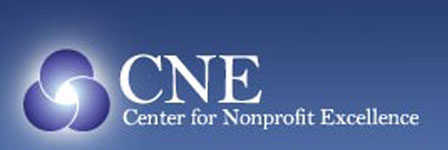
Whatever you do, you need courage. Whatever course you decide upon, there is always someone to tell you that you are wrong. There are always difficulties arising that tempt you to believe your critics are right. To map out a course of action and follow it to an end requires some of the same courage that a soldier needs. Peace has its victories, but it takes brave men and women to win them. - Ralph Waldo Emerson
Text from the Draft of the Resolution/Bill for National Congenital Diaphragmatic Hernia Awareness Day:
Supporting the goals and ideals of a National Congenital Diaphragmatic Hernia Awareness Day to raise public awareness and understanding of The Congenital Diaphragmatic Hernia Birth Defect and to foster understanding of the impact congenital diaphragmatic hernia has on patients and future generations of their families.
_______________________________________________________________________
IN THE SENATE OF THE UNITED
STATES
_______________________________________________________________________
RESOLUTION
Supporting the goals and ideals of a National Congenital Diaphragmatic Hernia Awareness Day to raise public awareness and understanding of the congenital diaphragmatic hernia birth defect and to foster understanding of the impact congenital diaphragmatic hernia has on patients and future generations of their families.
Whereas congenital diaphragmatic hernia (known as “CDH”) is 1 of the most prevalent life-threatening birth defects in the United States, is a severe, often deadly birth defect that has a devastating impact, in both human and economic terms, it affects equally people of all races, sexes, nationalities, geographic locations, and income levels;
Whereas congenital diaphragmatic hernia birth defect occurs in 1 in 2,000 live births in the United States and accounts for 8% of all major congenital anomalies. With the rate of live births in the United States at 4,115,590 in 2004 (See, National Center for Health Statistics), this translates to approximately 1,800 live births with the congenital diaphragmatic hernia birth defect. Countless additional friends, loved ones, spouses, and caregivers must shoulder the physical, emotional, and financial burdens congenital diaphragmatic hernia causes;
Whereas congenital diaphragmatic hernia which there is not a genetic indication, or anything that could predict this birth defect other than ultrasound during pregnancy there is no consistant treatment or cure, is a leading cause of neonatal death in the United States;
Whereas fifty percent of those patients that do survive the congenital diaphragmatic hernia birth defect have residual issues, causing a severe strain on pediatric medical resources and on the delivery of health care in the United States;
Whereas proactive diagnosis and appropriate management of fetuses with congenital diaphragmatic hernias minimizes the incidence of emergency situations, dramatically improving survival rates;
Whereas neonatal medical care is one of the most expensive care in the United States and congenital diaphragmatic hernia neonate stays average of sixty to ninety days in intensive care, costing millions of dollars, utilizing blood from local blood banks and requiring the most technically advanced medical care;
Whereas congenital diaphragmatic hernia is a birth defect that causes damage to the lungs and the cardiovascular systems, patients may have long-term sequele such as respiratory insufficiency, gastroesphgeal reflux, poor growth, neurodevelopmental delay, behavior problems, hearing loss, hernia recurrence, and orthopedic deformities;
Whereas the severity of the symptoms, outcomes and results of congenital diaphragmatic hernia and the limited public awareness of the birth defect cause many patients to live with substandard care and forego regular visits to their physicians or to avoid following good health management or therapeutic management which would help avoid more severe complications when in the future and compromises the quality of life;
Whereas people and families who have chronic, life-threatening diseases and birth defects or care for those who do, similar to congenital diaphragmatic hernia have a predisposition to depression and its resultant consequences due to their anxiety over pain, suffering, and premature death;
Whereas the Senate and taxpayers of the United States desire to see treatments and cures for disease and would like to see results from investments in research conducted by the National Institutes of Health (NIH) and from such initiatives as the NIH Roadmap to the Future;
Whereas congenital diaphragmatic hernia is a verifiable example of how collaboration, technological innovation, scientific momentum, and public-private partnerships can generate therapeutic interventions that directly benefit congenital diaphragmatic hernia sufferers and their families, save billions of Federal dollars under Medicare, Medicaid, and other programs for therapies, early intervention and increased survival rates;
Whereas improvements in diagnostic technology and the expansion of scientific knowledge and management of care of congenital diaphragmatic hernia have increased the survival rates in some of these cases, there needs to be more research and awareness of this birth defect to increase the funding needed give a better quality of life to those who survive and more optimism to the families and health care professions who work with these children first hand;
Whereas there are thousands of volunteers nationwide who are dedicated to expanding essential research, fostering public awareness and understanding of congenital diaphragmatic hernia, educating congenital diaphragmatic hernia patients and their families about the disease to improve their treatment and care, providing appropriate moral support, and encouraging people to become organ donors; and
Whereas these volunteers engage in an annual national awareness event held during the month of March and more specifically the 31st Day of March, and such a month or day would be an appropriate time to recognize National Congenital Diaphragmatic Hernia Awareness Day:
March 31st therefore, be it Resolved, That the Senate—
(1) designates the day of March 31, as ``National Congenital Diaphragmatic Hernia Awareness Day'';
(2) supports the goals and ideals of a national day to raise public awareness and understanding of congenital diaphragmatic hernia (known as ``CDH'');
(3) recognizes the need for additional research into a cure for congenital diaphragmatic hernia; and
(4) encourages the people of the United States and interested groups to support National Congenital Diaphragmatic Hernia Awareness Day through appropriate ceremonies and activities, to promote public awareness of congenital diaphragmatic hernia and to foster understanding of the impact of the disease on patients and their families.
_______________________________________________________________________
RESOLUTION
Supporting the goals and ideals of a National Congenital Diaphragmatic HerniaAwareness Week to raise public awareness and understanding of Congenital diaphragmatic hernia and to foster understanding of the impactCongenital diaphragmatic hernia has on patients and future generations of their families.
_______________________________________________________________________







No comments:
Post a Comment